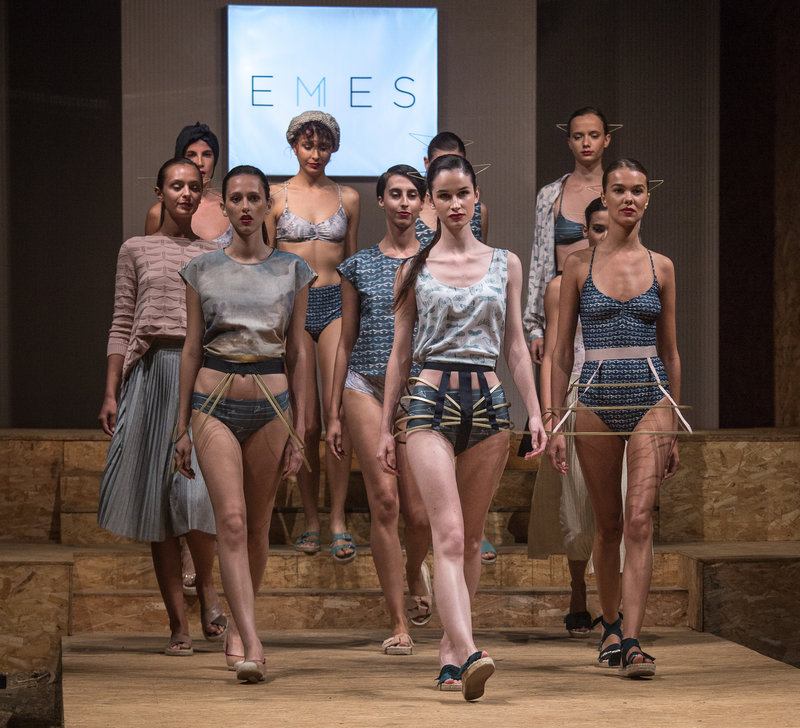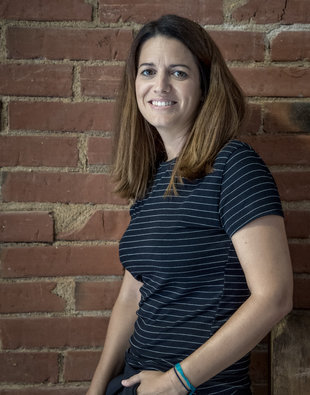CATALAN CHIC
Talent, creativity, art and courage
The marketing and runway coordinator of the Costa Brava Fashion Weekend, Clara Esteve, talks to Catalonia Today about the event's success and its future
In times of crisis it is uncommon for any venture to grow exponentially in its early days. When it does, it attracts attention and interest. A team of what they themselves might term “hobbyists”, led by fashion designer Clara Esteve, have done just that in the coastal town of Calonge in a mere three years, with a daring venture that has surprised all and sundry. The figures speak for themselves: daily attendance at the Costa Brava Fashion Weekend in the first year was 2,500 and last year it was 5,000. This year it grew to 12,000 people.
Things certainly seem to have evolved very quickly. Where did all this come from?
It started out as something of a hobby. I came up with the basic idea. I have been in fashion design for 15 years, 12 of those designing for a label and the last three working alone here in Calonge, and I got together with a group of friends, all professionals in the fields of photography, media, communications, things in general related to the image. We put together a project, based locally, we came up with the name and the idea of hosting the event here. Next we took the idea to the town council and they were interested. I think they were surprised that we had most of it sorted out already. We already knew the place we wanted, El Collet, a very special venue, and they said yes.
And how did the first year go? Were you happy with it?
We contacted people, designers, all sorts of people. The budget was almost non-existent; we were and are all volunteers, it's not a company or anything like that. It was all very precarious and we were so nervous. Our surprise was the enormous response. We almost couldn't cope, we had the feeling we were losing control. But the public loved it, the whole event, the catwalks, the stalls, everything.
This group of organisers, how many of you are there?
In that first year just four, but now there are 10 of us. Of course, we incorporate other people as we get nearer to the event itself or as we need them and then there is the staff for the weekend itself. But remember, this is all non-profit and that means working for the love of it.
So, the how did things evolve from there?
The second year we tried a number of things, some worked, some didn't. For example, the market place. In the first year we had 18 stalls and then, 32. Too many. We learned a lot and it helped us make good decisions, especially for this year when we decided to concentrate on quality, delivery, content, and not so much on the quantity. We have learned that we have limits and we are comfortable with that because we want to maintain standards. That second year a lot of good things happened; private sponsorship and backing from public organisations. The council saw the possibilities and developed the venue, which has been great for the town in general. But the best thing was that, despite the ups and downs, the public response was tremendous. But really, we tried to grow too quickly and we had to stop and rethink things. There are fewer stalls. We have decided that we will not change the programme in terms of the number of catwalks and we will keep the event to the three days. Our real objective is to get behind designers, promote creators, support local creators...
By local you mean...
Local industry here in Catalonia and in Spain. We are very clear about one thing, all those taking part are based here, design here, buy their fabrics here, produce their collections here. We live in an area, the Empordà in Catalonia, and we want to support that. It is a question of setting an identity and we want to support fashion and design that is linked to where we live, designers and producers who have made a decision to base themselves here. We don't want to leave anyone out, and as there are a lot of designers wanting to attend, we have to choose and we are careful about that. Our role is to support those who take to the catwalk. They are here to sell themselves and market their designs. Our job is to make sure they are able to do so in the best possible conditions.
Where is all of this going?
(Laughter) The truth is that at the beginning we saw this as a five-year project. In reality, it is a year by year thing. It is so complex, anything else is impossible. For a start off, we are still working with a tiny budget, so thinking so far ahead is out of the question. We close one event and almost immediately we are working on the next. We don't have a choice. If we want private sponsors then they we have to have that organised before the end of their financial year. The other thing is that we really do not know what will happen in the future. There have been some changes in the team and there will be others in the future. We are all professionals and working in our own jobs that pay the rent. This doesn't. It's not always possible for everyone to dedicate their time in the same way. Luckily, when someone leaves there is always someone else ready to step in. Changes? There have been many. We have signed an agreement with Barcelona 080, we have other official patrons and endorsements. We have developed the fringe areas of the event: music, art, entertainment. This year we decided to have the first prize awarded among the designers.
What about recognition outside the area?
080 is consolidation, recognition, it shows everyone that we are moving in the right direction. We have good press, locally and nationally, people are showing an interest . Also, to present the event we are on the move. The first year we held the presentation here, then in Girona, and this year in Barcelona. That also has helped us with sponsorship. This year we have been sponsored by the brewery Moritz.
Is CBFW like other events, the fashion markets in other places, in larger centres?
No, we have developed our own personality and we are not trying to imitate or to be what we are not. That unique identity is important to us because it keeps us centred on what we are doing.
What makes a catwalk in a fashion event so special?
As a designer myself I can say it is that moment when you present all of your work of the last six or eight months, it is so special: my work, out in the open and ready to be judged by everyone, for good or for bad. It's like a small birth in some ways. I think other designers feel the same. Things change but the catwalk has been around for a long time. But think about this, right now I am working on next year's collection. A year in the future. Really, the idea is frightening. Quite honestly at times I think I am going mad. Colours, fabric, style, textures, all for something that is not going to happen for a year. The internet and fast fashion have also changed things. The moment you put your work on the catwalk you know someone is filming and quite possibly, somewhere, in just a few hours, someone is already copying your design and it will be in the shops before you can get it there yourself. All the work you have been doing over the last six months.
All of this is pretty heady, it seems non-stop. Maintaining that enthusiasm and motivation in the team all year round, is that difficult?
Yes, it is. But everyone is motivated and no one has stopped believing in the project. But we also have to think of maintaining contact with the public. We are lucky to have an excellent communications team that works all year around. Being in a state of constant evolution helps and that everyone feels part of the project is also important.
And this personality? Give me words.
Adjectives? You are asking me to define the CBFW? Let me think. Talent, creation, creativity, art, fashion, demanding, perhaps we could say somewhat obsessive and perfectionist, dynamic, and very courageous.




